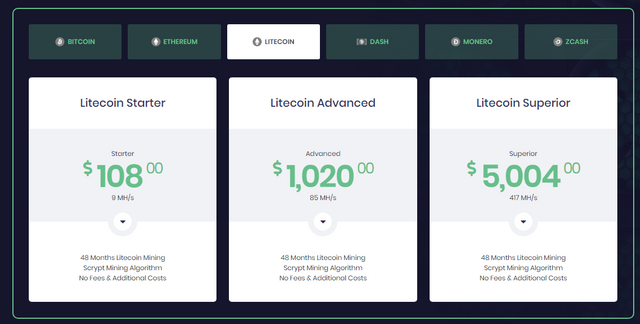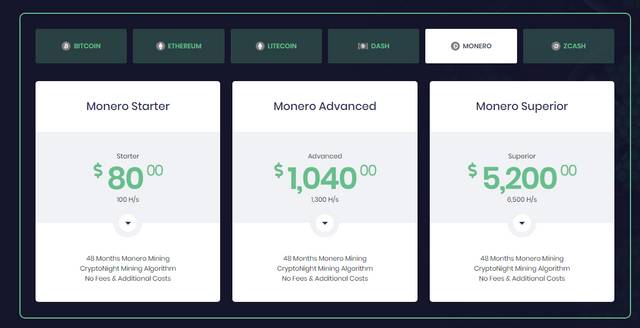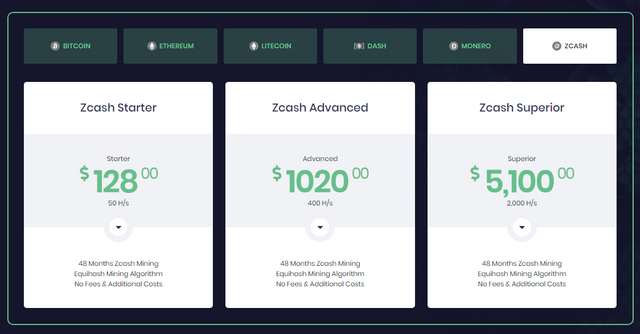Crypto-Mining.biz | Bitcoin & Alt-coin Mining Platform 2020
Crypto Mining new generation mining facility with the latest technology equipment and best location choices making it accessible and profitable for everyone. With expert management, technical and operative team, constantly expanding facilities with eco-friendly energy sources, constant investment in ecosystem and excessive research on technology; company pursues collective development as well as individual and social benefits.
Feel The Hash Power At The Tip Of Your Finger
You are only a few clicks away from state of art mining facilities filled with cutting-edge mining devices. Powerful yet flexible. Developed for crypto-currency enthusiasts and for anyone who is passionate about the future. See how Crypto Mining is un-clocking the accessible mining and discover the business at a glance.
How Does Bitcoin Mining Work?
Cryptocurrency mining is painstaking, costly and only sporadically rewarding. Nonetheless, mining has a magnetic appeal for many investors interested in cryptocurrency because of the fact that miners are rewarded for their work with crypto tokens. This may be because entrepreneurial types see mining as pennies from heaven, like California gold prospectors in 1849. And if you are technologically inclined, why not do it?
However, before you invest the time and equipment, read this explainer to see whether mining is really for you. We will focus primarily on Bitcoin (throughout, we'll use "Bitcoin" when referring to the network or the cryptocurrency as a concept, and "bitcoin" when we're referring to a quantity of individual tokens).
Consumers tend to trust printed currencies, at least in the United States. That’s because the U.S. dollar is backed by a central bank called the Federal Reserve. In addition to a host of other responsibilities, the Federal Reserve regulates the production of new money, and the federal government prosecutes the use of counterfeit currency.
Even digital payments using the U.S. dollar are backed by a central authority. When you make an online purchase using your debit or credit card, for example, that transaction is processed by a payment processing company such as Mastercard or Visa. In addition to recording your transaction history, those companies verify that transactions are not fraudulent, which is one reason your debit or credit card may be suspended while traveling.
Bitcoin, on the other hand, is not regulated by a central authority. Instead, Bitcoin is backed by millions of computers across the world called “nodes.” This network of computers performs the same function as the Federal Reserve, Visa and Mastercard, but with a few key differences. Nodes store information about prior transactions and help to verify their authenticity. Unlike those central authorities, however, Bitcoin nodes are spread out across the world and record transaction data in a public list that can be accessed by anyone, even you.
Bitcoin Basics: What Is Cryptocurrency Mining?
When someone makes a purchase or sale using bitcoin, we call that a “transaction.” Transactions made in-store and online are documented by banks, point-of-sale systems, and physical receipts. Bitcoin miners achieve the same effect without these institutions by clumping transactions together in “blocks” and adding them to a public record called the “blockchain.” Nodes then maintain records of those blocks so that they can be verified into the future.
When bitcoin miners add a new block of transactions to the blockchain, part of their job is to make sure that those transactions are accurate. (More on the magic of how this happens in a second.) In particular, bitcoin miners make sure that bitcoin is not being duplicated, a unique quirk of digital currencies called “double-spending.” With printed currencies, duplicating money isn't an issue. Once you spend $20 at the store, that bill is in the clerk’s hands. With digital currency, however, it's a different story.
Digital information can be reproduced relatively easily, so with Bitcoin and other digital currencies, there is a risk that a spender can make a copy of their bitcoin and send it to another party while still holding onto the original. Let's return to printed currency for a moment and say someone tried to duplicate their $20 bill in order to spend both the original and the counterfeit at a grocery store. If a clerk knew that customers were duplicating money, all they would have to do is look at the bills’ serial numbers. If the numbers were identical, the clerk would know the money had been duplicated. This analogy is similar to what a bitcoin miner does when they verify new transactions.
Rewarding Miners
With as many as 500,000 purchases and sales occurring in a single day, however, verifying each of those transactions can be a lot of work for miners, which gets at one other key difference between bitcoin miners and the Federal Reserve, Mastercard or Visa. As compensation for their efforts, miners are awarded bitcoin whenever they add a new block of transactions to the blockchain. The amount of new bitcoin released with each mined block is called the "block reward." The block reward is halved every 210,000 blocks or roughly every 4 years. In 2009, it was 50. In 2013, it was 25, in 2018 it was 12.5, and sometime in the middle of 2020, it will halve to 6.25.
At this rate of halving, the total number of bitcoin in circulation will approach a limit of 21 million, making the currency more scarce and valuable over time but also more costly for miners to produce.
How Does Bitcoin Mining Work?
Here's the catch. In order for bitcoin miners to actually earn bitcoin from verifying transactions, two things have to occur. First, they must verify 1 megabyte (MB) worth of transactions, which can theoretically be as small as 1 transaction but are more often several thousand, depending on how much data each transaction stores. This is the easy part.
Second, in order to add a block of transactions to the blockchain, miners must solve a complex computational math problem, also called a "proof of work." What they're actually doing is trying to come up with a 64-digit hexadecimal number, called a "hash," that is less than or equal to the target hash. Basically, a miner's computer spits out hashes at a rate of megahashes per second (MH/s), gigahashes per second (GH/s), or even terahashes per second (TH/s) depending on the unit, guessing all possible 64-digit numbers until they arrive at a solution. In other words, it's a gamble.
The difficulty level of the most recent block at the time of writing is more than 13 trillion. That is, the chance of a computer producing a hash below the target is 1 in 13 trillion. To put that in perspective, you are about 44,500 times more likely to win the Powerball jackpot with a single lottery ticket than you are to pick the correct hash on a single try. Fortunately, mining computer systems spit out many, many more hash possibilities than that. Nonetheless, mining for bitcoin requires massive amounts of energy and sophisticated computing rigs, but more about that later as well.
The difficulty level is adjusted every 2016 blocks, or roughly every 2 weeks, with the goal of keeping rates of mining constant. That is, the more miners there are competing for a solution, the more difficult the problem will become. The opposite is also true. If computational power is taken off of the network, the difficulty adjusts downward to make mining easier.
How Can You Compete with Millions of Miners?
If 1 in 13 trillion doesn't sound difficult enough as is, here's the catch to the catch. Not only do bitcoin miners have to come up with the right hash, but they also have to be the first to do it.
Because bitcoin mining is essentially guesswork, arriving at the right answer before another miner has almost everything to do with how fast your computer can produce hashes. Just a decade ago, bitcoin mining could be performed competitively on normal desktop computers. Over time, however, miners realized that graphics cards commonly used for video games were more effective and they began to dominate the game. In 2013, bitcoin miners started to use computers designed specifically for mining cryptocurrency as efficiently as possible, called Application-Specific Integrated Circuits (ASIC). These can run from several hundred dollars to tens of thousands but their efficiency in mining Bitcoin is superior.
Today, bitcoin mining is so competitive that it can only be done profitably with the most up-to-date ASICs. When using desktop computers, GPUs, or older models of ASICs, the cost of energy consumption actually exceeds the revenue generated. Even with the newest unit at your disposal, one computer is rarely enough to compete with what miners call "mining pools."
A mining pool is a group of miners who combine their computing power and split the mined bitcoin between participants. A disproportionately large number of blocks are mined by pools rather than by individual miners. Mining pools and companies have represented large percentages of bitcoin's computing power.
Is Bitcoin Mining Sustainable?
Between 1 in 13 trillion odds, scaling difficulty levels, and the massive network of users verifying transactions, one block of transactions is verified roughly every 10 minutes. But it’s important to remember that 10 minutes is a goal, not a rule.
The bitcoin network can process about seven transactions per second, with transactions being logged in the blockchain every 10 minutes. For comparison, Visa can process somewhere around 24,000 transactions per second. As the network of bitcoin users continues to grow, however, the number of transactions made in 10 minutes will eventually exceed the number of transactions that can be processed in 10 minutes. At that point, waiting times for transactions will begin and continue to get longer, unless a change is made to the bitcoin protocol.
This issue at the heart of the bitcoin protocol is known as “scaling.” While bitcoin miners generally agree that something must be done to address scaling, there is less consensus about how to do it. There have been two major solutions proposed to address the scaling problem. Developers have suggested either (1) creating a secondary "off-chain" layer to Bitcoin that would allow for faster transactions that can be verified by the blockchain later, or (2) increasing the number of transactions that each block can store. With less data to verify per block, the Solution 1 would make transactions faster and cheaper for miners. Solution 2 would deal with scaling by allowing for more information to be processed every 10 minutes by increasing block size.
In July 2017, bitcoin miners and mining companies representing roughly 80% to 90% of the network’s computing power voted to incorporate a program that would decrease the amount of data needed to verify each block. That is, they went with Solution 1.
The program that miners voted to add to the bitcoin protocol is called a segregated witness, or SegWit. This term is an amalgamation of Segregated, meaning “to separate,” and Witness, which refers to “signatures on a bitcoin transaction.” Segregated Witness, then, means to separate transaction signatures from a block — and attach them as an extended block. While adding a single program to the bitcoin protocol may not seem like much in the way of a solution, signature data has been estimated to account for up to 65% of the data processed in each block of transactions.
Less than a month later in August 2017, a group of miners and developers initiated a hard fork, leaving the bitcoin network to create a new currency using the same codebase as bitcoin. Although this group agreed with the need for a solution to scaling, they worried that adopting segregated witness technology would not fully address the scaling problem.






Bounty Program:-
Get Free Ethereum Airdrop Every Week
https://crypto-mining.biz/?ref=Junaidspider
#Cloudmining #CryptoMining #Cryptominingbizincome #Mining
General Bounty Campaign Rules:
Must join CryptoMining's Telegram Channel:
Must have an account on CryptoMining.
For Ethereum Donations :- 0x9A62B57E49D3BC420d2220CBcC42A32986c2C31C